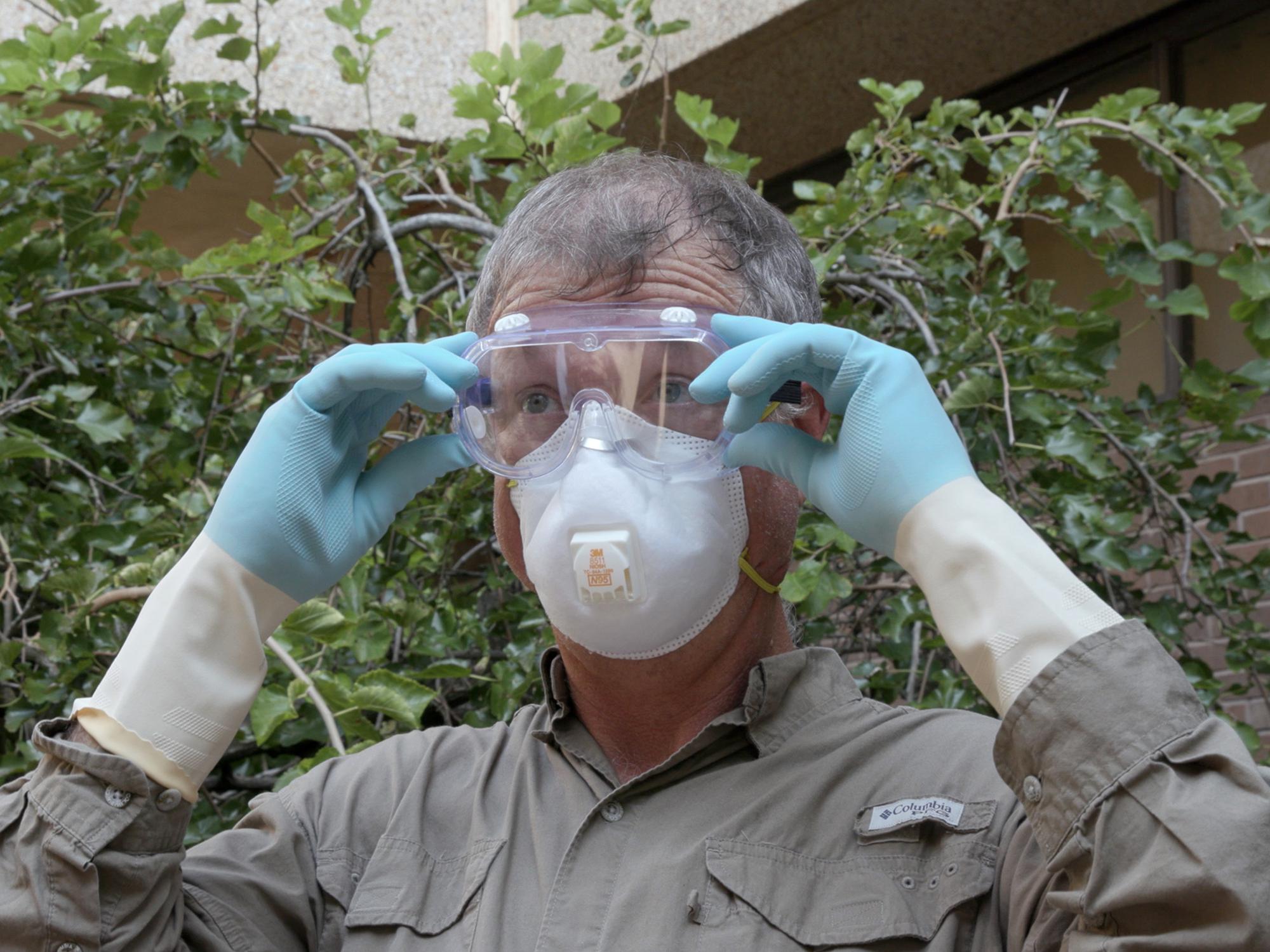Information Possibly Outdated
The information presented on this page was originally released on August 29, 2019. It may not be outdated, but please search our site for more current information. If you plan to quote or reference this information in a publication, please check with the Extension specialist or author before proceeding.
Be prepared when cleaning up after a flood
VICKSBURG, Miss. -- Every approach to cleaning a house after a flood has its pitfalls.
Homeowners who opt for the “do-it-yourself” route face the risk of serious illness if they are not wearing the right gear when they clean. If they use the wrong products, they can damage their homes beyond repair.
Employing a contractor can be costly, and anyone who does not vet the credentials of renovators before hiring them can easily get scammed.
Residents of the southern Delta region of Mississippi may do some of both now that the floodwaters that forced them out of their homes for several months have finally receded. But anyone returning to a flood-damaged home should do their homework before renovating.
For the DIYers, this process starts with knowing what protective clothing to wear. An N95 standard industrial mask is crucial because it prevents inhalation of mold and mildew spores inside the structure. Heavy, rubber gloves and rubber boots are also musts. Water-resistant coveralls or jumpsuits and closed goggles protect the rest of the body from contact with harmful chemicals.
Susan Cosgrove, Mississippi State University Extension agent, explains the Clean First, Then Disinfect method for cleaning up after a flood.
Do not go into a flood-damaged building until the water is below the lowest electrical outlet, and make sure the electricity is disconnected. After entering, know what has to go. Wood floors that have not been under water for extended periods may be salvageable, for example, but laminate flooring has to be removed.
“There are types of flooded materials that you will not be able to salvage,” said Theresa Hand, Hinds County coordinator for the Mississippi State University Extension Service. “Items that must be discarded include carpet, the pad under your carpet, insulation, linoleum flooring, drywall, upholstery, mattresses and couches.”
Bleach is often a go-to cleaning agent because it is accessible and cheap, but it should not be the first choice for all surfaces. Liquid detergents and mold-removing sprays are much safer alternatives for washing walls.
“Cleaning with an all-purpose cleaner followed by disinfectants that are actually labeled as ‘mold control sprays’ is where I would start because they don’t have the toxins contained in bleach and they don’t trigger asthma,” Hand said. “If you have to use bleach, keep in mind that more is not better. A half-cup to a cup per gallon of water is the suggested amount.”
Structures that are not sealed off and ventilated will continue to pose a health risk.
“If you do not ventilate the house until everything is completely dry, you won’t get rid of the mold, and the spores will continue to grow and make you sick when you breathe them in,” Hand said. “Open your windows and use fans, but make sure they are blowing air out of the house and not inside.”
Susan Cosgrove, Extension family resource management associate, said the interior of any flood-damaged building must be cleaned first and then disinfected. Cleaning with soap and water removes bacteria from surfaces. Disinfecting with a chemical eliminates the bacteria. When done together the right way, these processes keep mold from returning.
“Disinfecting is extremely important because we have to assume that there are many types of pathogens in this water,” Cosgrove said. “Disinfectants have different concentrations, and some of them can be corrosive, so you have to follow the instructions on the label carefully and be careful what you use them on. Work wet to avoid creating dust and disturbing any lead paint.”
Also look at the label to make sure the disinfectant is approved by the Environmental Protection Agency. Be careful not to mix disinfectants with bleach, and make sure any cleaner or disinfectant does not contain phosphate.
“Mold feeds on phosphate, and bleach can ruin fine woods and clothing,” Cosgrove said. “Quat and biocide compounds are good microbial agents, but make sure to follow the mixing directions and only leave chemicals on the surface as long as the label indicates.”
After leaving the flood-damaged building, remove and discard protective clothing before going anywhere else.
“You don’t want to bring those contaminants home or wherever you are temporarily staying,” Cosgrove said.
The Tdap combination vaccination, which protects against tetanus, diphtheria and pertussis, is recommended for anyone cleaning a flood-damaged structure.
“Even if you only have mild damage in your home from flooding, groundwater contaminants left behind pose serious health threats,” Hand said. “Don’t go outside barefooted, and if you have not been vaccinated in the last 10 years, you need to have that done to protect yourself.”
Extreme amounts of mold will require professional help. Research area contractor quotes when looking for restoration assistance to avoid getting overcharged.
“If you get back to your home and think the amount of cleanup is more than you can handle on your own, you need to check contractors’ credentials to know if they have the training and certification to operate lead safe,” Cosgrove said. “People who come door to door offering these services can be trying to exploit you, so be careful when choosing a renovation service.”
Visit the Extension For Real Life blog at http://extension.msstate.edu/blog for videos and more information on cleaning up after a flood.








